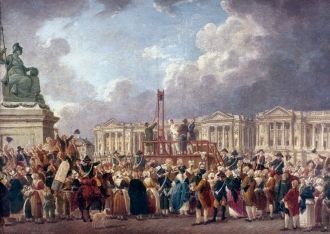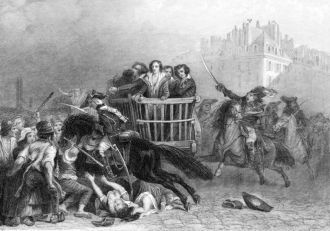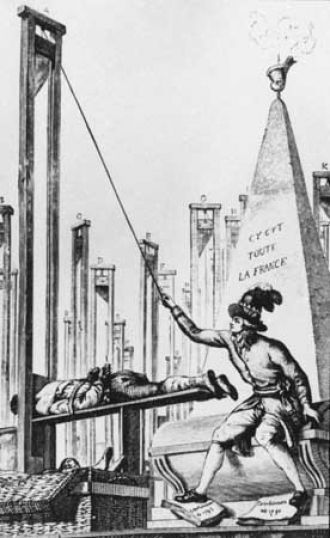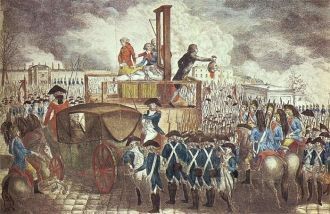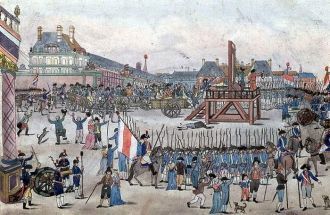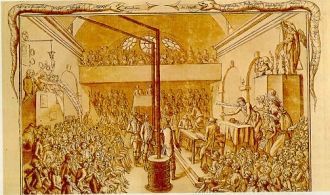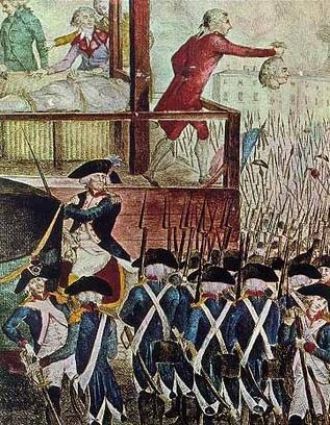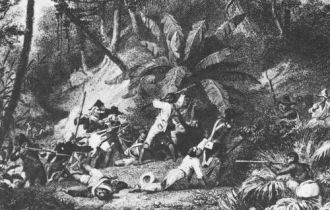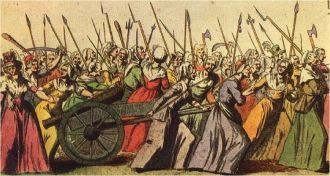France
Reign of Terror, 1793–94, period of the French Revolution characterized by a wave of executions of presumed enemies of the state. Directed by the Committee of Public Safety, the Revolutionary government's Terror was essentially a war dictatorship, instituted to rule the country in a national emergency.
Origins of the Terror
Initially the Committee of Public Safety was created (Apr. 6, 1793) to preserve the reforms of the French Revolution. Its membership took final form on Sept. 6. Among its twelve members were Bertrand Barère de Vieuzac, Lazare Carnot, Georges Couthon, M. J. Hérault de Séchelles, Maximilien Robespierre, and Louis de Saint-Just and the Hébertists, J. N. Billaud-Varenne and J. N. Collot d'Herbois. Robespierre became the dominant member. Their aim was to eliminate all internal counterrevolutionary elements, to raise new armies, and to assure food supplies for the armies and cities. Some of their measures were demanded by the people of Paris, whose support was essential.
Confinement and Execution
Responsibility for the police measures taken during the terror lay also with the Committee of General Security, which had control over the local committees formed to ferret out treason. The Law of Suspects (Sept. 17, 1793) defined those who could be arrested for "treasonable" activities; it was enforced by the Revolutionary Tribunal. Estimates vary as to the number of victims; thousands were guillotined, and over 200,000 were arrested. Representatives on mission, who were agents sent out by the Committee of Public Safety, had absolute power to enforce the terror, including the establishment of special courts.
The counterrevolutionary uprising in the Vendée (Oct.–Dec., 1793), which was suppressed with a heavy loss of life, and revolts against the Convention in Lyon and several other cities served as a backdrop to the intensification of the terror of Jan.–Mar., 1794. In Nantes mass drownings called noyades claimed at least 3,500 lives. In June, 1794, the Committee of Public Safety introduced a new law, which strengthened the power of the Revolutionary Tribunal; the court could return only verdicts of either acquittal or death. Executions increased greatly.
Government and Economy
The machinery of government was centralized in the hands of the Committee of Public Safety. Military mobilization, planned by Carnot, and based on the levée, a requisition of able-bodied males between the age of 18 and 25, was followed by a complete reorganization of the armed forces that paid dividends in the French Revolutionary Wars. In the field of economics, the demands of the enragés in Paris brought strict controls. The law of the maximum and other measures set price and wage ceilings, forbade hoarding and withholding from the market, requisitioned food and supplies for the army, and instituted rationing. Land purchase by the peasants was made easier. Despite these measures, economic problems continued to intensify.
Outcome
When French military success began in June, 1794, popular discontent with the brutal measures at home grew evident. By this time the members of the committee were at odds with one another and with the Committee of General Security. The members of the National Convention, fearing that the new purge would be turned against them, joined forces with Robespierre's enemies on the committees and overthrew Robespierre on 9 Thermidor (July 27, 1794).
The Reign of Terror was followed by the Thermidorian reaction under a reconstituted Committee of Public Safety (1794) and by the White Terror, in which many former terrorists were executed. While the Reign of Terror answered the need for a strong executive and saved France from anarchy and military defeat, its effect upon public opinion, especially foreign opinion, was extremely harmful to the Revolutionary cause.
Source: http://www.encyclopedia.com/topic/French_Revolutionary_Wars.aspx



 France,
France, 